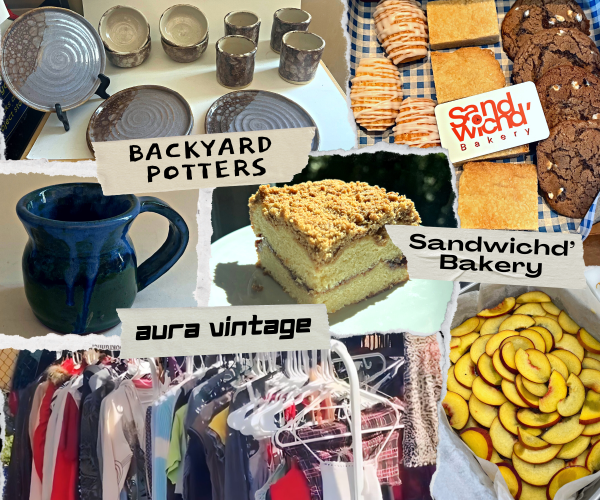Species Spotlight: Top 10 Crabs of the Pacific Northwest
The Pacific Coast is teeming with wildlife of all shapes and sizes, but our most iconic critters happen to be crustaceous. In the long awaited sixth installment of Species Spotlight, we take a look at Oregon’s top 10 species of crab.
10) Green Crab
The green crab is pretty. PRETTY INVASIVE THAT IS. The green crab is considered one of the most invasive marine animals; it tramples seagrass, kills off and outcompetes local species and has very few predators to stop it. It first came to the US in the 1800s, and has been terrorizing us ever since. It is, admittedly, pretty with its glistening green shell, but here at the Cardinal Times we don’t support pretty privilege and definitely don’t support crustaceous colonizers so this crab doesn’t make it any higher than 10th on this list.
9) Red rock crab
The red rock crab is a pretty solid staple of crabs. It has a dark red shell, six limbs and doesn’t do a whole lot of unique things. It crushes barnacles with its large, black-tipped claws for food, and is preyed on by the giant pacific octopus. The invasive green crab is also a target of this aggressively-natured crustacean; the red rock crab will use force to defend its territory from being invaded. Overall, this is a very solid crab that helps fend off invasive species, so it deserves to be recognized on this list.
8) Dungeness crab
The Dungeness crab is a Pacific Northwest phenom. There is an annual Dungeness crab and seafood festival held in Washington, it is the official crustacean of the state of Oregon and it’s a delicacy up and down the West Coast. It has five pairs of legs, a hard, deep red shell with funky designs on it and white tipped claws; the colors on this crab kind of remind me of Lightning McQueen in the best way possible. When threatened, this crab can bury itself completely under the sand, which I think is a pretty neat defense mechanism. Overall, this unique and stylish crab has been vital to the Pacific Northwest and earned a solid place on the list.
7) Spiny lithode crab
The spiny lithode crab is all flash and no substance. It has bright red spikes with hairs on the ends, which makes it look both fuzzy and spiky; it’s almost like a cactus! Underneath the layers of spikes is the crab’s bright white skin, which really completes the look. However, the crab doesn’t do a ton. It resides on vertical walls, and while thought to prey on shrimp, it really just takes advantage of shrimping nets and eats the captured seafood. It looks cool, but unfortunately it’s kind of lazy and doesn’t have a ton of unique traits.
6) Pygmy rock crab
The pygmy rock crab might be the cutest crab on the list. It is super tiny at only five cm across, and has really wide set, almost cartoonish eyes. It’s either a dull brown or dark red color, and has four sets of walking legs. This crab hides away in small crevices of rock and uses its shell as a door to its makeshift shelter. During mating, one male crab can mate with as many as seven females. The cuteness, uniqueness and ungodly rizz of this crab earn it an easy spot on this list.
5) Butterfly crab
This crab looks like the “Kilroy was here” drawing. It’s got a giant nose, tiny beady eyes and a very unique shell shape. The shell is generally orange to brown in color, and it helps the butterfly crab to swim around using something called “drag powered swimming.” This crab has good looks and a unique shape; I appreciate its presence in the Pacific Northwest tremendously.
4) Kelp crab
The kelp crab has one of my favorite shapes on this list. It is small enough to fit in the palm of your hand, has really long legs and its shell is like a half oval with a cute face protruding from it. This crab is olive brown in color, but that varies depending on the type of kelp near where they reside. These crabs hide in kelp and climb it to catch food. In the winter these crabs will eat meat as plants die off, but in the summer they will switch to a plant based diet. These adaptive little fellas are very cute and definitely deserve to be noted on this list.
3) Graceful kelp crab
The graceful kelp crab is the cooler version of the kelp crab. It does everything the kelp crab does, but it comes in more colors and has better fits. Its claws have blue extremities, with red, orange or white tips with pale bands on the walking legs, and the body of the crab can be brown, red or yellow, but sometimes even blue or pink! The graceful kelp crab also fits in the palm of your hand (cute). Their spines on their legs still help them cling to kelp, but its spikes allow it to cover itself with kelp as well, making this a gorgeous crab all around.
2) Spiny king crab
Easily the freakiest looking crab on this list, the spiny king crab is about six inches across. They are brown, pink or sometimes blue in color, covered in giant scary spikes and resides deep underwater. It uses its monstrous spikes and long, spindly legs to defend itself from predators, and to strike fear into my heart. It descends from the hermit crab, which is strange because hermit crabs look so tame in comparison to the spiny king crab. I love this crab; its bone chilling aura sure shivers my timbers.
1) Graceful decorator crab
This crab is the weirdest looking crab on the list. It has giant bug eyes, a brown or yellow shell and is shaped like a triangle with giant spindly legs protruding from it. Easily the drippiest crab on this list, the graceful decorator crab has velcro-like spikes on its back that it uses to attach kelp and other organisms to itself so that it can remain hidden from predators. It’s like a little outfit, and this crab wears it very well. This crab’s looks, and its unique way of accessorizing land it a top spot on this list.
This article barely scratches the surface of all the types of crabs you can find in and around Oregon, so I encourage you to go out and learn more about these beautiful creatures. The next time you take a trip to the beach you can now identify some of the finest species of crabs the Pacific Northwest has to offer.









